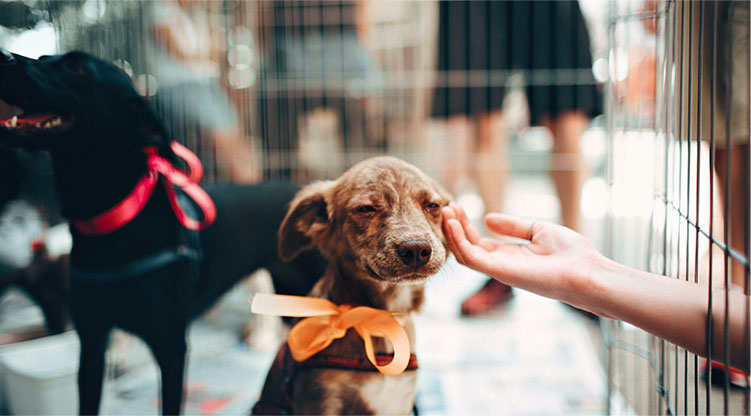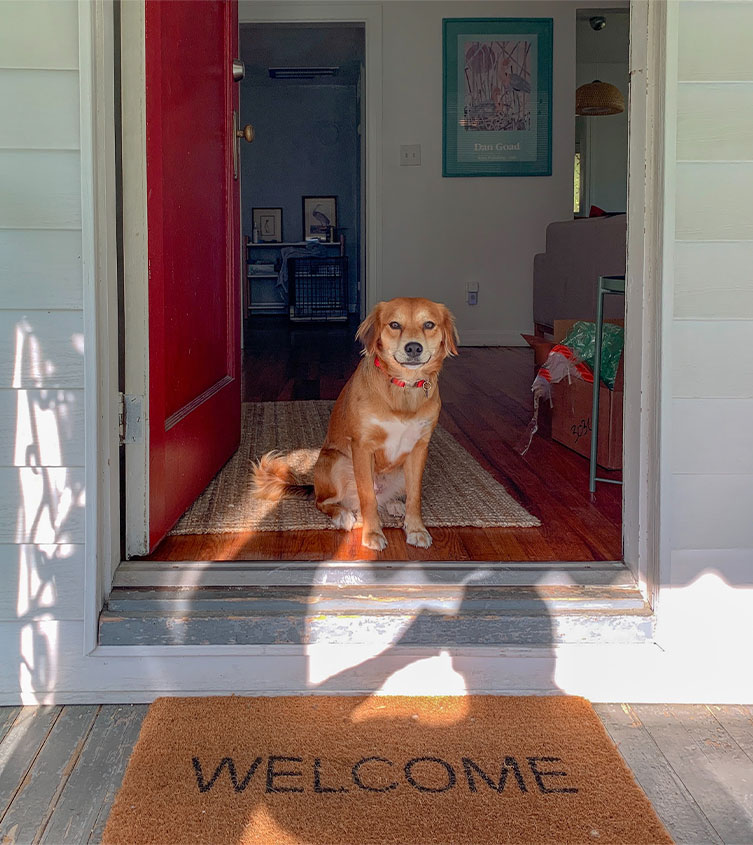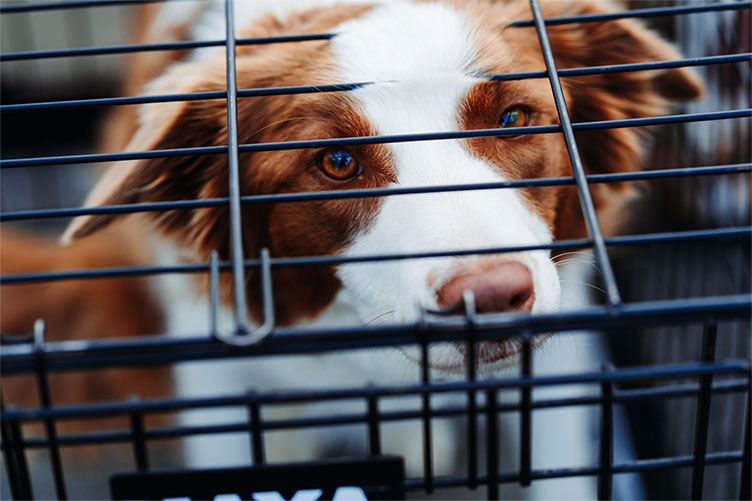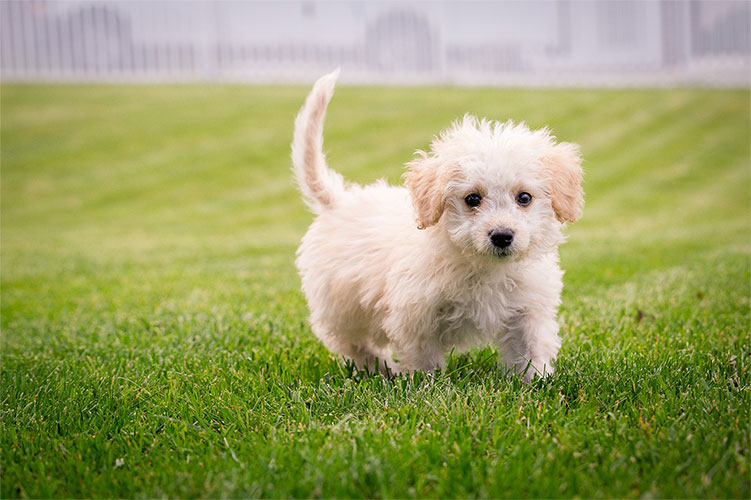Choosing the Right Dog Crate and How to Crate Train
A dog crate has many uses and benefits to both owners and their canine companions. Read on to learn more about choosing the right crate and crate training your loyal, wet-nosed pal.
DOGS

Posted by bravectosouthafrica – 24 August 2020
Dog Crates: What They Are and Why You Should Bother Using One
A dog crate is a closed-in pen, that’s just big enough for your four-legged friend to stand up, as well as turn around, in. The crate should become your dog’s personal ‘safe space’, where they can retreat to whenever needed. Many people are initially hesitant to use a crate because they feel it’s cruel. This is far from the truth if used correctly. Not only will a crate help satisfy your dog’s natural den instinct, but it can also assist you in quickly and effectively training your dog.
Crates are versatile pieces of pet equipment but are primarily used in house training and rehabilitation after a dog has undergone surgery. They can be made from a variety of materials – more on that in a bit.
It’s important to note that dogs aren’t meant to reside in their crates permanently. As soon as they’ve learnt the desired behaviour (i.e. stopped destroying the furniture the moment you turn your back or no longer leave messes around the house), they should largely be able to come and go from their crate as they please. Leave the door open from then on out.
Since dogs are pack animals, they have a high social need. Keep them inside the house as much as possible, even when you’re sleeping or aren’t home. They need to feel like a member of the family, by being close to you and where you spend most of your time.

The Benefits of Dog Crate Training
The correct and humane use of a dog crate can benefit both your fur child and you. Benefits to your dog include:
- They have access to their own, private and secure hideaway to which they can withdraw when they feel unwell, stressed out or tired.
- They can be taken along on family trips and outings far easier.
- Will spare your dog the frustration and loneliness of being isolated from the household outdoors, while everyone is occupied indoors. This way, your dog will still feel like a valued member of the pack, even if they have to spend some time inside their crate.
- It’s a fast and effective way to teach your dog proper bowel control. They’ll come to associate elimination with going outside and won’t be as likely to make a mess while inside.
- The avoidance of anxiety, fear and confusion caused by negative reactions to their problematic behaviour.
Benefits to yourself include:
- Peace of mind every time you have to leave your dog home alone. You can relax, knowing that they can’t tear up the furniture, make a mess or develop a bad habit – instead, they remain safe and comfortable in their crate during your absence.
- Travelling with your dog is now safer and easier than ever before, plus your dog has their ‘safe space’, i.e. their crate, with them. This should help your dog come to terms with unfamiliar surroundings quicker.
- House training should be a hassle-free process, by using the kennel’s confinement as a control mechanism (your dog won’t want to make a mess where they sleep, after all). It’ll help you establish a routine of outdoor elimination and prevent any accidents during the night or when your dog is home alone.
- Having a safe and secure place to keep your dog out of the way, when necessary, such as when you have guests over or during dinnertime, as well as when they grow over-excited or become bothered by too much chaotic activity (e.g. lots of kids running around).

The 4 Main Dog Crate Types
When you start browsing around for a dog crate, you’ll notice four main crate types, each boasting distinct selling points:
- Plastic – Durable and sturdy, plastic dog kennels are a good option for avid travellers, as they often meet airline requirements.
- Soft-sided – A good choice for puppies or smaller breeds that are used to crates. Soft-sided crates’ flexible materials and lightweight design make them easy to set up and stow away as needed.
- Wire – Ideal for breeds living in warmer regions or those with thick coats, wire dog crates allow plenty of ventilation. It’s also collapsible, making it easy to store away and transport.
- Wooden – Perfect for owners who value style. Wooden crates can be found in a wide variety of designs, so be sure to shop around for one that fits your home’s aesthetic.
If you’re unsure of which to get, speak to your vet or other knowledgeable pet care professional to help you identify the right crate for your dog.
Getting Started With Dog Crate Training from Puppyhood
Julie of the Cape Province Dog Club has found crate training to be “the single most useful training tool [she has] ever used.” You can read her full experience here. She also has the following valuable advice to share on getting your puppy crate trained:
Establish a Routine
Make up a comfy bed for your puppy inside their crate. Cover it with a blanket or sheet if it’s a wire one. Place the crate in a location where it’s close to outdoor access and you can still keep an eye on your puppy, such as the kitchen or your bedroom. Proceed to go play with your pup outside and make sure they have relieved themselves before going back inside. Now, place them inside their crate with a treat and close the door. Go away and ignore any whining or crying, as your puppy will fall asleep after a while.
Be sure to listen closely for signs of them waking up from their nap, go pick them up and take them outside ASAP. If you simply open up the crate and allow your pup to walk out on their own, they’ll just make a mess right outside the door. Place your puppy in their crate whenever you’re unable to watch them, but remember to take them outside for a bathroom break first.
Place your puppy’s crate next to your bed during the night so you can hear when they start stirring. Pick them up and take them outside to do their business. Put them back in their crate immediately afterwards.
When You Leave the House
As your puppy progressively gets used to their crate, you can start leaving them at home in it for short periods, while you run errands. It’s important to not make a big scene about leaving – simply put your pup in their crate and go. As soon as you return, act in a very matter of fact way. Don’t turn it into a big reunion. Pick up your puppy and take them outside. As soon as you start making a huge deal of it, your puppy’s anxiety about being left home alone will increase.
Those who work during the day should place their puppy’s crate in a closed off area, such as the backyard, bathroom or a part of the kitchen. Leave the door to their crate open and place newspapers over the rest of the floor space. When your puppy gets tired, they’ll retreat to their kennel to sleep.
Reduce the Odds of Your Puppy Having an Accident in Their Dog Crate
If you’re attentive enough, you should be able to prevent your puppy from making any messes inside their crate. Reduce the odds of your puppy having an accident by:
- Not placing a bowl of water inside their crate.
- Taking your puppy outside and making sure that they’ve relieved themselves before returning them to their crate.
- Making sure their crate is the correct size – if it’s too big, they’ll simply relieve themselves in the open space.
Should your puppy have an accident in their kennel, don’t punish them. Simply clean up the mess with a pet-friendly cleaning agent.

What Size Dog Crate Should I get?
As touched upon above, choosing the correct size crate for your dog is important to prevent them from making messes inside their crate and to keep them comfortable. To buy the correct size crate for your dog, you’ll need four measurements:
- The distance going from the top of your dog’s nose to the base of their tail (not the tip – this will lead to the crate being too big).
- The distance from the ground, up to your dog’s elbow.
- The measurement of the widest point of your dog.
- The measurement from the ground up to your dog’s highest point.
Dog trainers have a handy crate calculator on their website. Simply insert your dog’s measurements to establish their ideal crate size. Pet Crates Direct has a dog crate sizing chart that can also help you identify the best crate size for your dog.
Keep Your Dog and Their Crate Tick, Flea and Mite-Free
Bravecto® is a fantastic fast-acting and long-lasting solution to keeping your dog, their crate and your home tick, flea and mite free – all in a single dose. Choose between Bravecto® Spot-On for Dogs, which keeps your canine companion free of ticks for 4 months and fleas for 6 months, and Bravecto® Chew, which protects your pooch from fleas and ticks for 12 weeks.
Always make your dog’s wellbeing a priority so you can enjoy many happy and healthy years together.

Subscribe to our Newsletter
Get to know your furry friend better! Sign up for all things dog- or cat-related.
The Hairy Facts about the dreaded hairball
12 April 2021
Help! My dog’s barking mad! Volume 2
12 April 2021
Your Itchy, Scratchy Cat – All About Cat Skin Problems
12 April 2021
The Dog’s Diet: A Bone of contention?
01 April 2021
Mango Fly Worms: How to Spot and Eliminate them
Posted on November 28,2019
Managing Mange And Mites In Your Dog
Posted on June 11,2018
Why Do Cats Purr and How? Learn What Your Cat Is Saying
Posted on October 14,2020
How to Get Rid of Ear Mites in Dogs
Posted on November 06,2019









